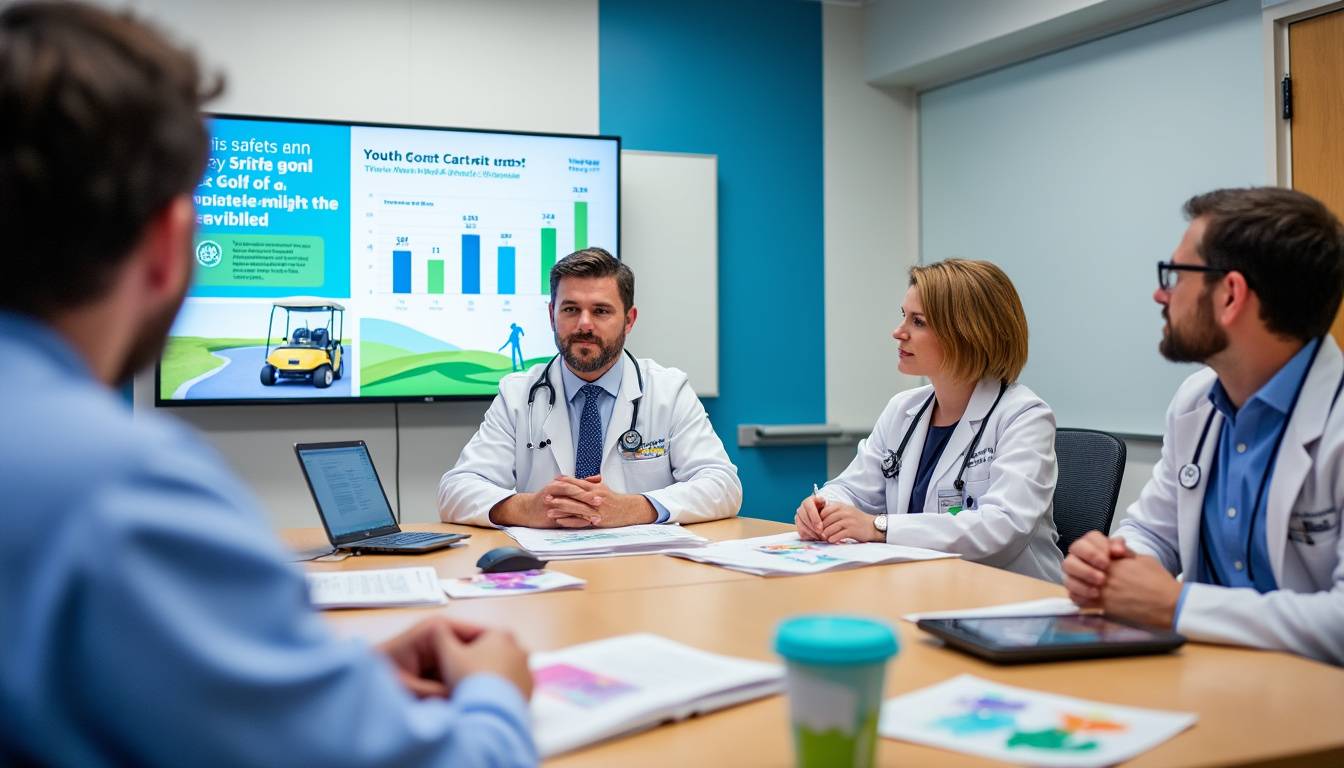Golf carts have become increasingly common in residential neighborhoods, especially among youth, yet their use carries significant risks. Recent research from the Children’s Hospital of Philadelphia highlights a concerning rise in golf cart-related injuries among children and adolescents over the past decade. The study reveals that many accidents are linked to insufficient safety features, lack of age-appropriate regulations, and limited awareness of safe operation practices. This calls for immediate improvements in education and safety protocols to protect young riders and drivers on golf carts like Yamaha, Club Car, and E-Z-GO.
Rising Concern Over Children’s Safety and Injuries from Golf Cart Usage
As golf carts become more accessible, a growing number of young people are using these vehicles recreationally and for transportation within community spaces. Unfortunately, this trend correlates with a noticeable increase in injuries, often severe, among users aged 22 and under.
- Nearly half of injuries occur in children under 12 years old, indicating early exposure without adequate supervision or training.
- Male children are particularly affected, representing approximately 90% of injury cases.
- The most frequent injuries include lacerations, abrasions, and fractures, largely due to collisions or falls from the vehicles.
Leading brands such as Polaris, Cushman, and Tomberlin have manufactured models commonly involved, prompting discussions about the need for enhanced safety features.
Understanding Accident Mechanisms and Injury Patterns in Youth Golf Cart Incidents
The retrospective analysis of the National Electronic Injury Surveillance System (NEISS) data provided insight into how these accidents occur. Injuries are primarily caused by falls or ejections during sharp turns or sudden stops, often due to the lack of adequate restraints or protective equipment.
- Children are more prone to falls and ejections, accounting for 55% of their injuries from golf cart accidents.
- Among adolescents, collisions and rollovers are more common, emphasizing different risk profiles within age groups.
- Superficial injuries such as scrapes and cuts are more frequently reported in boys, while fractures appear evenly distributed across genders.
Golf carts from manufacturers like Star EV, Garia, ParCar, and Bad Boy Buggies show varying adherence to safety standards, underscoring the need for regulatory oversight.
Key Safety Recommendations to Reduce Youth Injuries on Golf Carts
The Medical team at CHOP emphasizes that golf carts should never be treated as toys but as genuine vehicles requiring caution and respect. To enhance safety, several practical steps are vital for parents, communities, and manufacturers:
- Limit youth golf cart usage to essential activities only and ensure strict supervision.
- Enforce comprehensive adherence to local speed laws and operate within designated areas.
- Mandatory safety education programs for all young drivers and passengers.
- Specify age-appropriate safety features such as seat belts, roll bars, and proper seating arrangements.
- Regular maintenance and safety inspections of carts by certified technicians.
Parents should prioritize models with robust safety records among popular brands including Club Car, Yamaha, and E-Z-GO to minimize risks.
Transforming Community Awareness and Policies Surrounding Youth Golf-Cart Operation
Beyond individual efforts, there is a clear need for community-driven initiatives and stricter regulations to foster safer environments for youth golf cart use. Schools, neighborhood associations, and local governments can collaborate to implement:
- Educational campaigns targeting families and young drivers to raise awareness of inherent risks.
- Establishment of certification programs for youth operating golf carts, verifying competency and safety knowledge.
- Stricter local ordinances limiting vehicle access in residential areas or requiring age minimums.
- Encouragement of manufacturers such as Cushman, Tomberlin, and Polaris to innovate towards child-specific safety designs.
This collective approach will create safer recreational spaces and reduce accident rates significantly.


